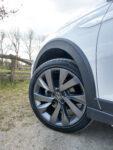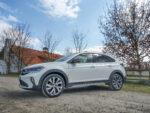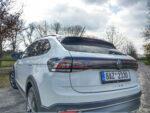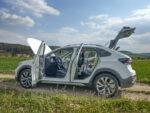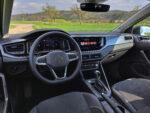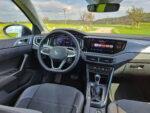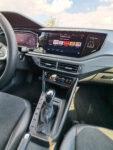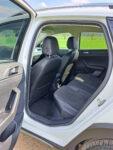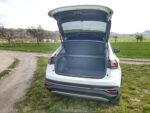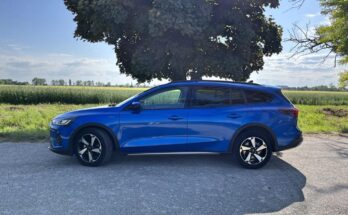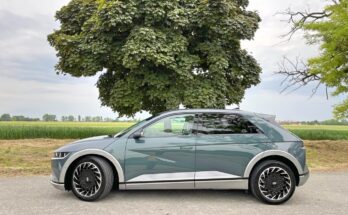Today's era favors cars that offer robust shapes and a bit of off-road ambition, if you add coupe body lines to that, you're pretty well set for success. The clear pioneer of this trend was the BMW X6, which started this more fashionable than practical issue.
The Volkswagen car company resisted this trend for quite a long time, but now it is coming to the market with the Taigo model. This compact SUV shares a chassis platform (MQB A0) with the Polo and T-Cross . However, the Taigo offers the previously announced "trendy" elements, i.e. a higher chassis and a roof shape in the spirit of a coupe body.
The VW Taigo is definitely not as new as it might seem. In South America, this car has been sold under the name Nivus for some time. A certain popularity on the South American market, Nivus, or Taigo if you will, brings it to the European market with slight changes.
A relatively decent, yet very decent version in the Style trim level, with a more powerful three-cylinder engine and a traditionally comfortable seven-speed DSG automatic transmission, made it to our editorial test.

Exterior
The design direction of Volkswagen cars has been easy to read for a long time, so even the new Taigo has relatively simple and clean lines . The VW Taigo is definitely a great car in terms of exterior design, which will offer its customers a higher body structure combined with a sloping roof in the rear of the car. The applied SUV coupe trend has been very popular for some time now, and it certainly suits the new Taiga.
The tested piece was also equipped with very nice 18″ wheels and a two-tone combination. It is a matter of course that the lower parts of the car, including the edges, are covered with significant cladding.
The front part then has elegant shapes with sufficient dynamism, which was taken care of here by the elongated headlights and rich shaping of the bumper. As part of the tested Style equipment, we also have LED Matrix headlights, which are effectively connected by a light line in the hood of the car.
The relatively robust rear part will offer horizontally oriented and interconnected headlights. It is also worth noting the very discreet trunk lid spoiler or the model designation, which is located below the license plate.
The side profile is completely typical for Taigo and easy to classify, because the eye of the observer will not miss the already announced higher structure of the body or the gradually decreasing rear of the car.
The VW Taigo is therefore a handsome crossover with simple shapes, which is a very pleasing car thanks to its contours and balanced proportions.
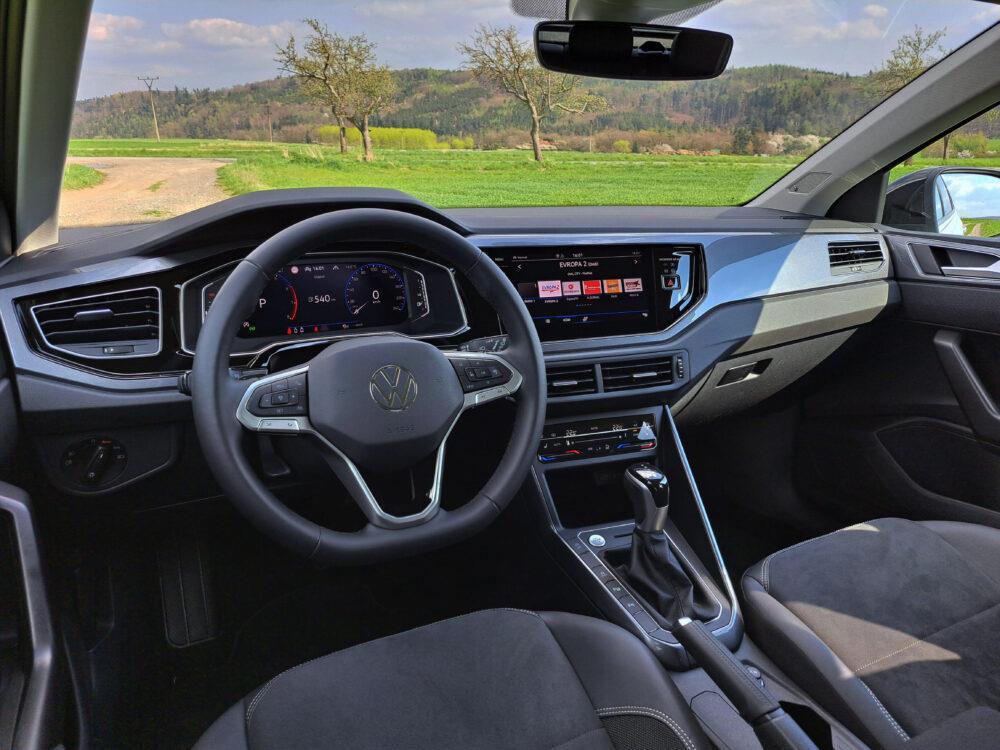
Interior
The interior of the car, mainly its dashboard, is based on the Polo sibling model, so it will delight you with traditionally high-quality workmanship, good clarity and excellent interior ergonomics. Within the dashboard itself, I have to praise the presence of softened plastics.
For example, the Digital Cockpit Pro digital instrument panel or the Discover Pro multimedia system with a diagonal of 9.2" brought decent additional equipment to our car. The additional Beats sound system also ensured quality listening.
The dashboard of the car therefore has an optically clean and orderly impression. The digital instrument panel is positively implemented within the classic "chapel" and together with the on-board infotainment display is integrated into one compact unit.
The weak points of the interior definitely include the touch control of the dual-zone air conditioning, i.e. control only by moving a finger along a fairly touchy surface.
In the case of our tested car, the central tunnel offered a traditional automatic transmission selector, as well as a start button and individual controls integrated into the continuous belt. The Taigo is also equipped with a classic "handle" instead of an electronically controlled handbrake.
The Taigo will also offer a very user-friendly multifunction steering wheel, not only because of its massive dimensions, but also because of the presence of classic physical controls.
The car's cabin pleasantly surprises with enough space in the longitudinal direction, so taller people can sit comfortably in the rear seats. It's a little worse in the opposite, i.e. transverse direction, so the rear bench is more comfortable for two crew members.
The relatively prominent and massive rear of the car has a positive effect on the volume of the luggage compartment, which has a very respectable 440 liters of volume. After folding the rear seats, the luggage space increases to 1222 liters.

Offered engines and driving impressions of the tested liter
Only petrol engines have moved under the hood of the Volkswagen Taigo, so the offer includes a three-cylinder 1.0 TSI in two power variants and a four-cylinder 1.5 TSI. These engines are combined with either a five- or six-speed manual, and then with a seven-speed DSG automatic. Only the front axle is always driven.
The tested unit was fitted with the more powerful of the pair of turbocharged three-cylinder engines and offered a power of 81 kW and a torque of 200 Nm. This engine is combined with a six-speed manual or, as in our case, with a seven-speed DSG automatic.
A more powerful liter engine combined with an automatic transmission gets along very well with the Taiga. The car provides a very quiet and comfortable driving performance most of the time. A light foot on the gas means that the gearbox does not rev the engine significantly and you practically do not know about it. An audible three-cylinder symphony will only play out when you need to overtake another vehicle, for example. The seven-speed DSG automatic is very well graded and the Taigo does not struggle even at highway speeds. The consumption can then be around 6.0 l/100 km.
The Taiga chassis itself also contributed to the good driving characteristics, the suspension of which is very well tuned and offers both sufficient comfort and a certain driving performance within a more sporty drive.
I must also praise the steering of the car itself, which is quite steep, with an immediate response from the wheels and without an exaggerated effect of the booster. In combination with the already praised multifunction steering wheel, it creates a really pleasant feeling about driving this car.
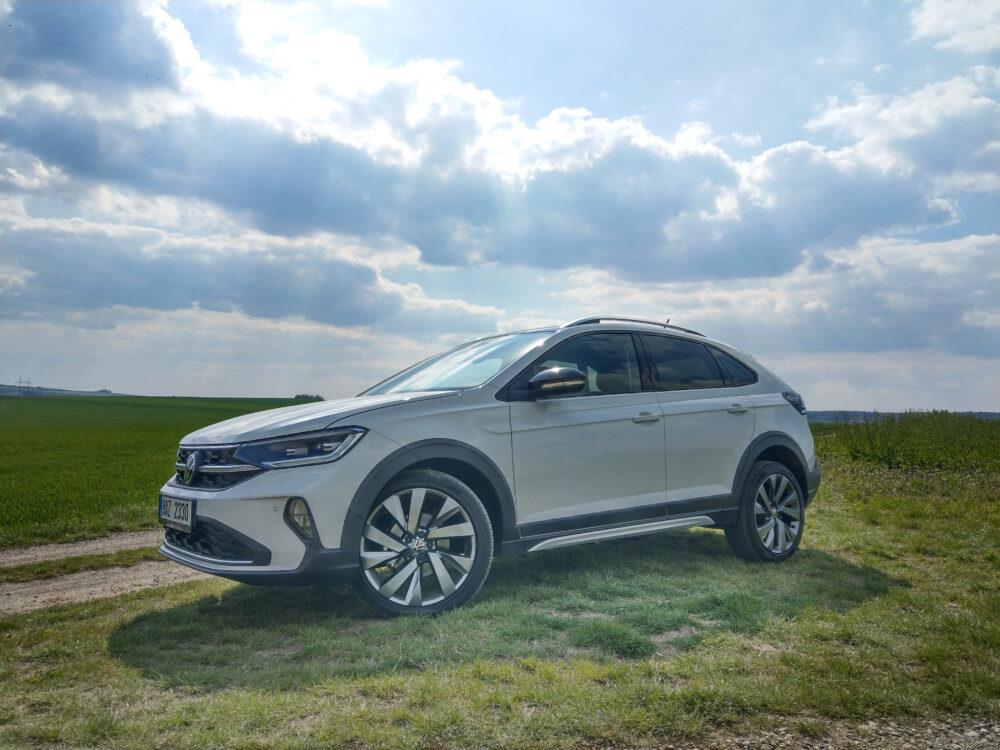
In conclusion
The new Taigo is a car with a very handsome and fresh appearance, its raised SUV coupe body is definitely trendy. The interior will offer traditionally high-quality workmanship with sufficient interior space, which in the case of this model also prevails in the luggage compartment.
The tested one-liter engine will satisfy most of its users in terms of performance, the combination with the seven-speed DSG automatic works very well and brings a very comfortable driving experience on board. All this is then supported by an ideally set chassis and steering.
The Volkswagen car company also comes with a fairly reasonable pricing policy, you can get the Taigo in the basic Life trim from CZK 515,900 including VAT. It is a car with a basic three-cylinder gasoline engine with an output of 70 kW and a five-speed manual. The basic Life equipment will only offer three-liter three-cylinder engines with outputs of 70 and 81 kW, which are available with a five- and six-speed manual or a seven-speed DSG automatic.
The higher trim level Style is already available with a turbocharged TSI petrol engine, which is only available with a seven-speed automatic. Its purchase price then starts at CZK 668,900 including tax.
The specification we tested, i.e. a more powerful three-cylinder engine combined with a seven-speed automatic, is available from CZK 625,900 including tax. The top of the range is the R-Line trim level, whose prices start at CZK 603,900 (in the case of the 1.0 TSI and six-speed manual).
Source: Author's text
Image source: Author's own photos








